This past weekend I was given the royal treatment by that most gentlemanly of gentlemen, Mark Rowlinson - he even provided for a steamer day which required the application of sun block.
A few observations:
1. Wilmslow has a interesting mix of holes, most especially the par 4s. Many of the two-shotters are made interesting because of the bunker placement, but some holes such as #s 1, 4 & 10 do work over interesting ground. For me, the par 4s are the highlight of the course.
2. In general, the fairways struck me as a bit narrow, but the rough was for the most part not overly punishing. On a related note, trees do not overly restrict recovery options.
3. The greens are generally flat with a few surprises here and there. There are, however, a handful of greens which have tucked sections where flag hunting can be dangerous business.
4. For the most part the bunker placement is thought provoking and attractive. Essentially, the bunkering is the key to the design in terms of working around the course and the strategic elements are well covered; sand can be found in all sorts of configurations.
5. The 3s and 5s with a few exceptions are not up to the standard of the par 4s. There is nothing greatly amiss, more likely it is the holes just didn't fit my eye.
I won't do a full tour because Mark's does the job well, I will, however, post some pix which may highlight different aspects of the course.
#1 is a boomerang hole to the left playing over #s 9 & 18 on the low ground ; its easy to run out of space right and is a tough opening drive. The green may be my favourite on the course. It generally moves away from the player and especially so near the back right.
#2 also turns left around a pair of bunkers and trees. There is much more room than apparent on the tee out to the right - which is where the drive needs to be to approach the green.
#3 is a terrific par 5 whose full length can be seen from the tee. The bunkering is obvious, yet well-placed. Perhaps the best aspect of the hole is the terrific run-away double green. There is a rise at the front of the green which is just high enough to create doubt in yardage distance.

The right flag is #3 green.

The next may be my favourite hole. The hole legs right to a green perched on a 10 foot ledge. Interestingly, the green is set some 20 yards back of the crest.

#5 is a good shortish par 4. The first 230 yards are flatish before descending to a perfectly placed centreline bunker some 50 yards shy of the green. In firm conditions I suspect the best play is to get as close to the bunker off the tee as one can. Trying to hit even a wedge between the bunker and the green is a tough shot.

The par 3 sixth plays back to the double green shared with #3. The 7th features some harsh cross bunkers which take some effort to carry in two even in a summer headwind.
#8 turns left and once again features cross bunkers, but these also obscure the nature of the second shot.

For those long enough off the tee there is full disclosure.

The drop shot 9th plays to the base of the first tee. A short walk takes the player the 10th, a pretty hole turning right around mature trees and over a dip in the fairway. As mentioned earlier, some greens are harder to access after playing a safer line - here is a good example.

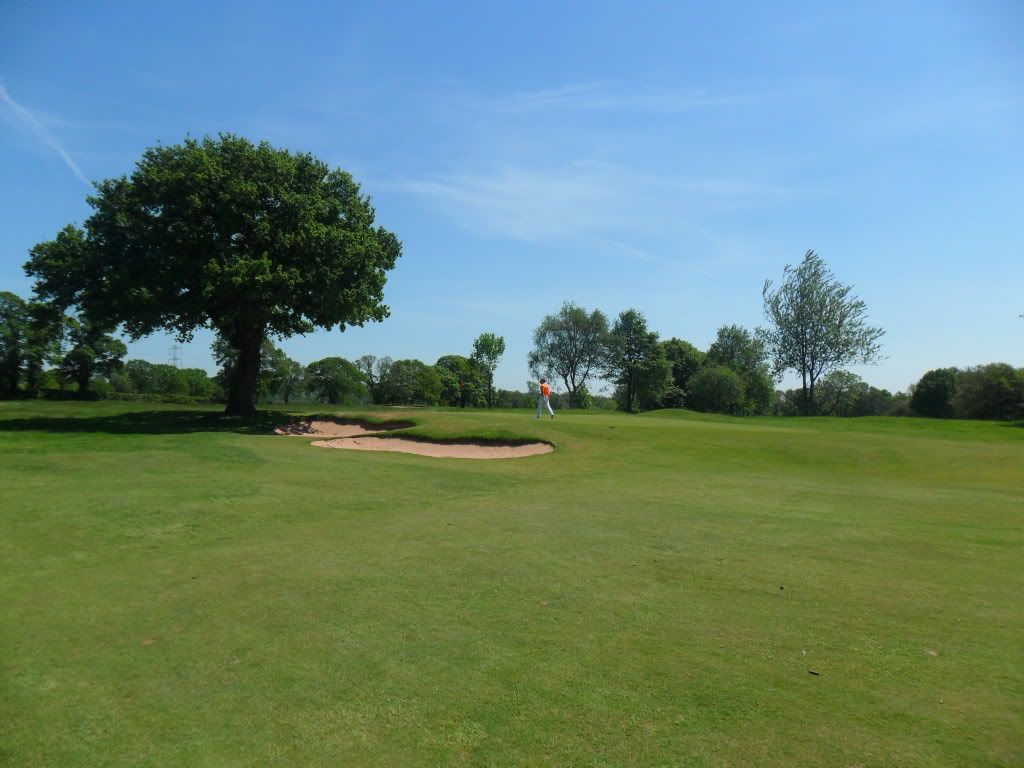
The 11th turns back on #10. It is drivable for flat bellies who can carry the ball 270ish, but as to be expected, there is trouble about.
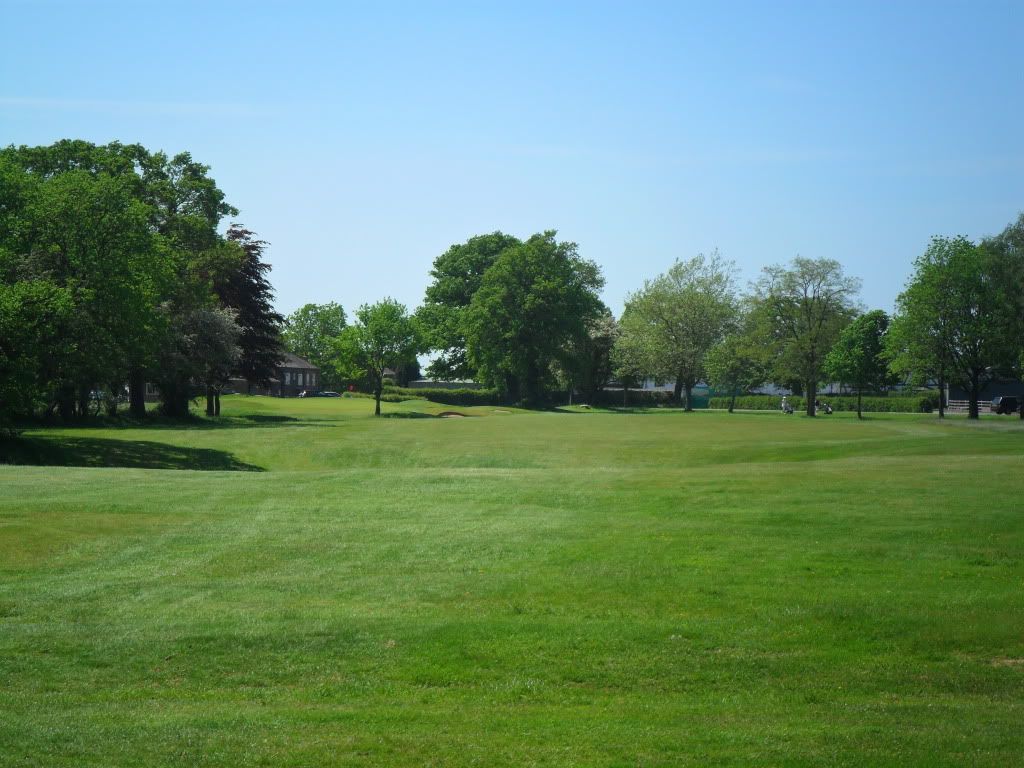
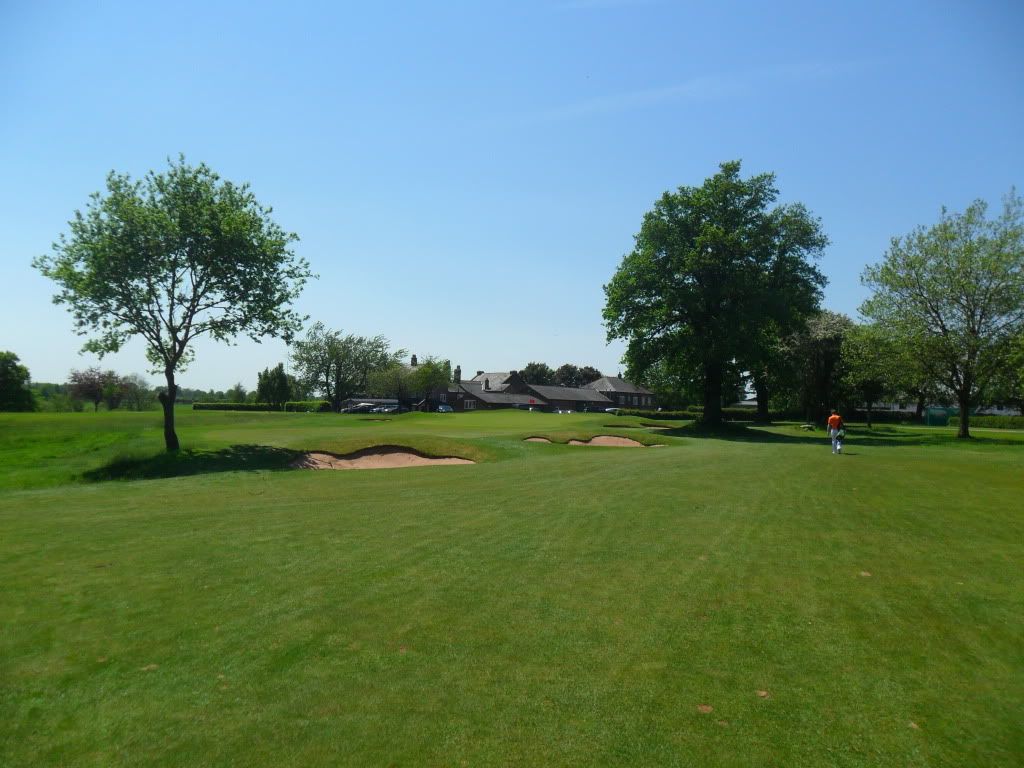
A very strong par 4, the 12th uses sand to perfection in challenging the golfer.
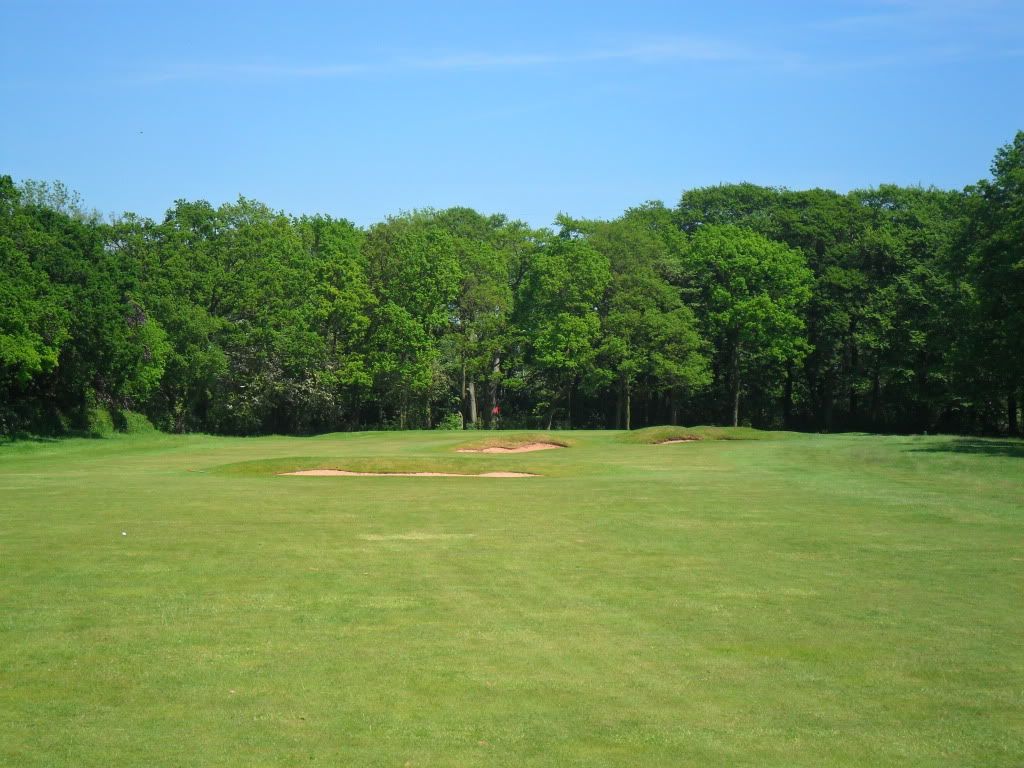

The par 5 13th isn't a bad hole, but it doesn't really do much for me. I spose the same could be said for the tough 14th, a very narrow par 3 to a plateau green. The two-shot 15th gets things moving in a positive direction. The dogleg is severe enough to require a very well directed tee shot and sand protects the right side of the green very well.
Back onto the the theme of narrow fairways, the 16th is a modest length par 4 turning hard right against the lay of the land. In truth, this is probably a lay-up for most as the fairway is not well defined from the tee nor is it an inviting tee shot. Once again, the hole can be tucked.
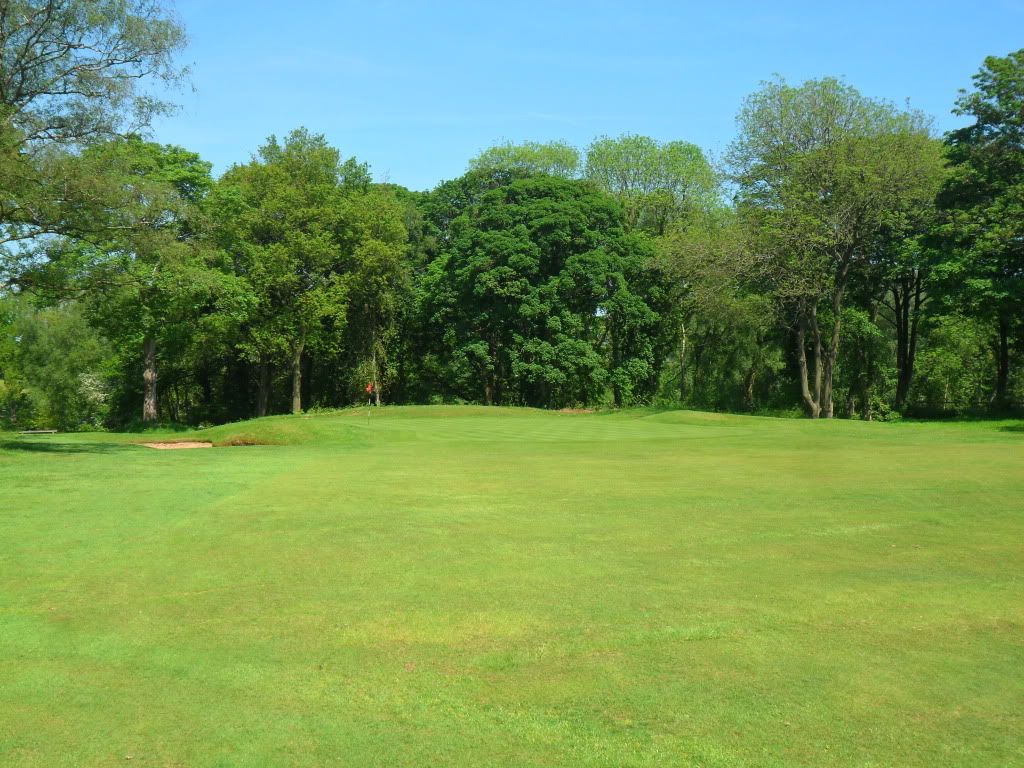
The short 17th crosses the same ravine as did the 14th. The two holes are cut from the same cloth, but the penultimate hole is more forgiving - and all the better for it.
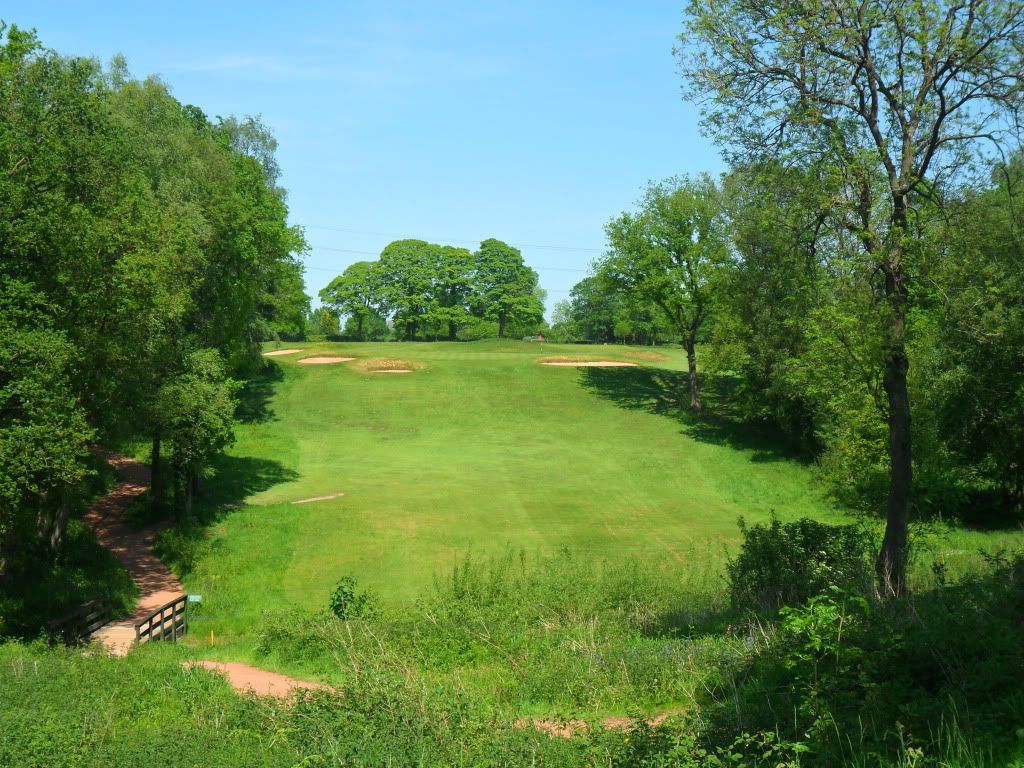
The final hole is a rollicking three-shotter diving downhill and to the left. The entire slope of the fairway feeds left as well. I liked the hole, but I can see where the blind nature combined with the severe slope can lead to frustrating searches for balls thought to be hit down the middle.
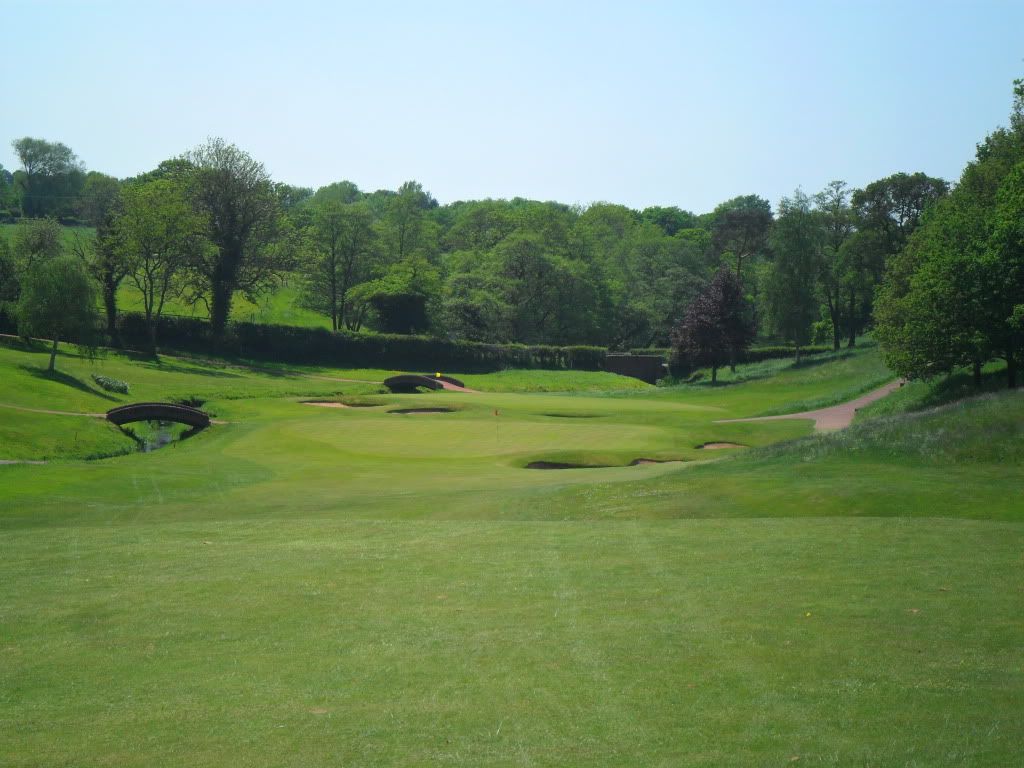
Wilmslow is a fine course which compliments the other architectural gems of the area such as Reddish Vale, Delamere Forest, Prestbury etc. It is well worth stopping by for a game if in the area of if you are lucky enough to be invited. Though I will say that folks shouldn't expect a pushover. The course plays fairly difficult for its 6600 yards, but it certainly won't cause any undue grief.
Mark - thanks for the invite. I would definitely make the journey for a future game - unsubtle hint. If you need pix to update your profile please ask and I will forward them.
Ciao